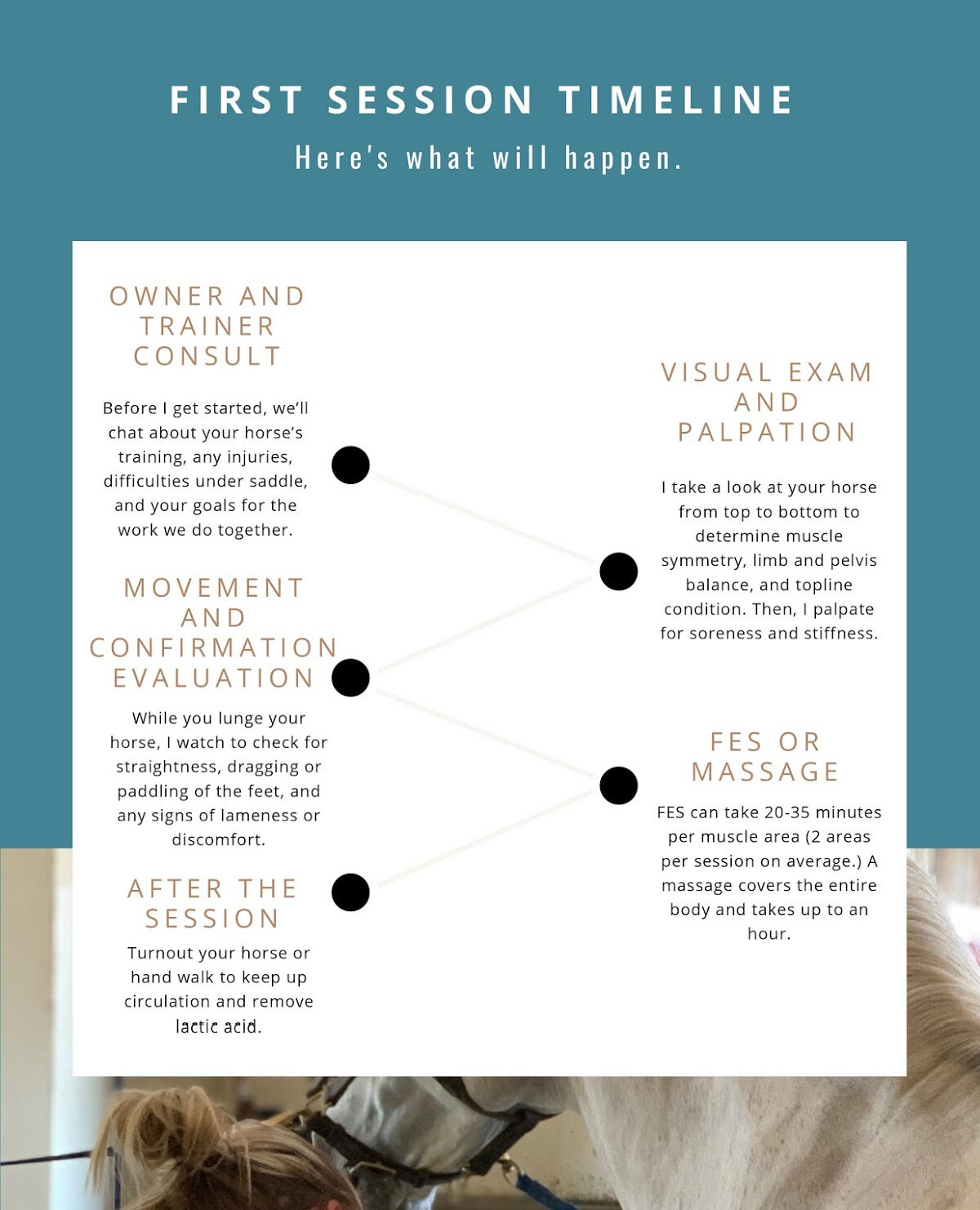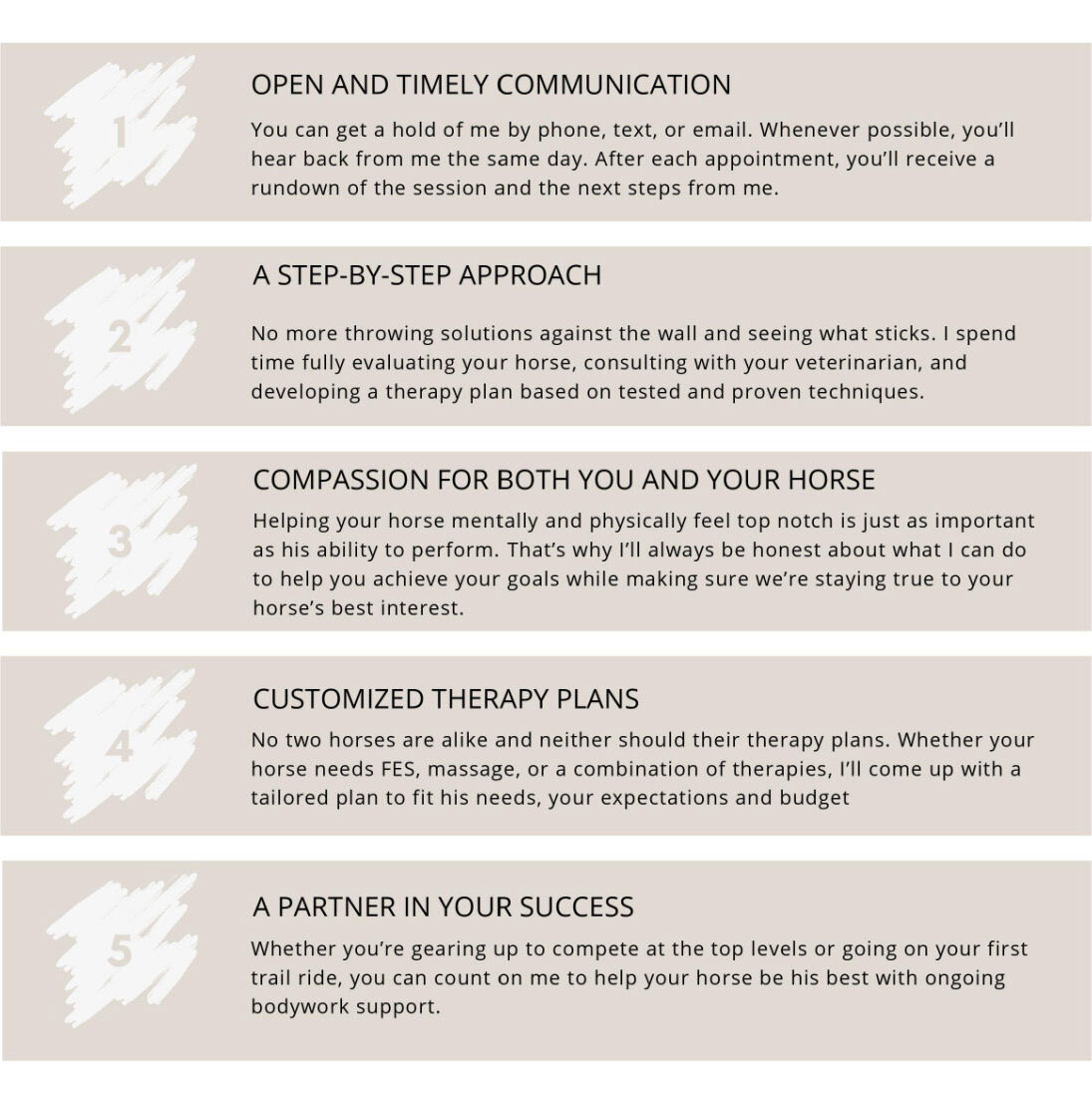What to Expect
Your most frequently asked questions answered
FES and massage: A few things you might like to know
Typical FES regimen
The number of sessions varies depending on the type of injury, ongoing nature of the problem, and your goals. Typically after three visits, you’ll see a difference.
From there, I will re-evaluate to determine how often I should see the horse. Each horse is different. Some require only a few visits, while others may require ongoing support. After each visit, I always evaluate your horse’s progress and develop a new plan when necessary.
Common reactions after FES
The day after a session, your horse may feel fatigued. This fatigue is normal as FES works the muscles continuously (up to an hour.)
Once you begin working your horse again, you may experience the following positive changes immediately:
- A larger stride at the walk with stronger forward movement
- Lighter rein contact and greater ease keeping him off the forehand
- Increased elasticity and flexibility
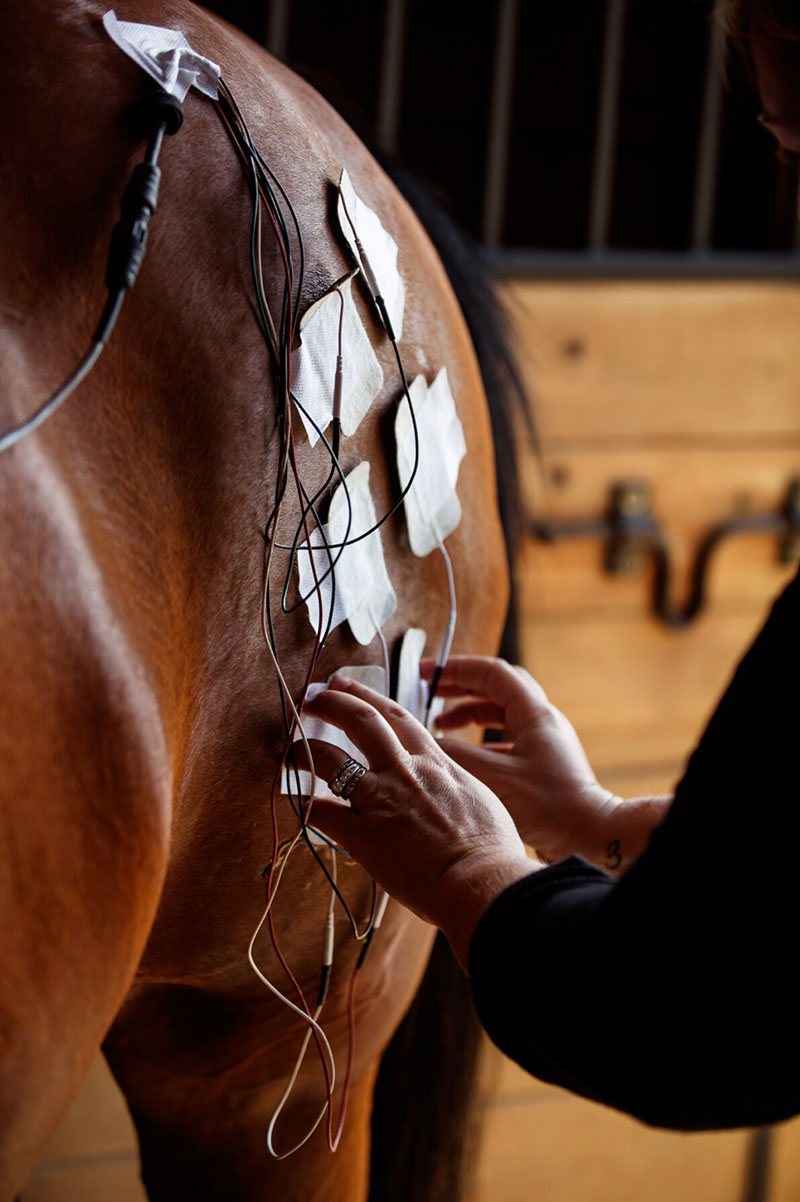
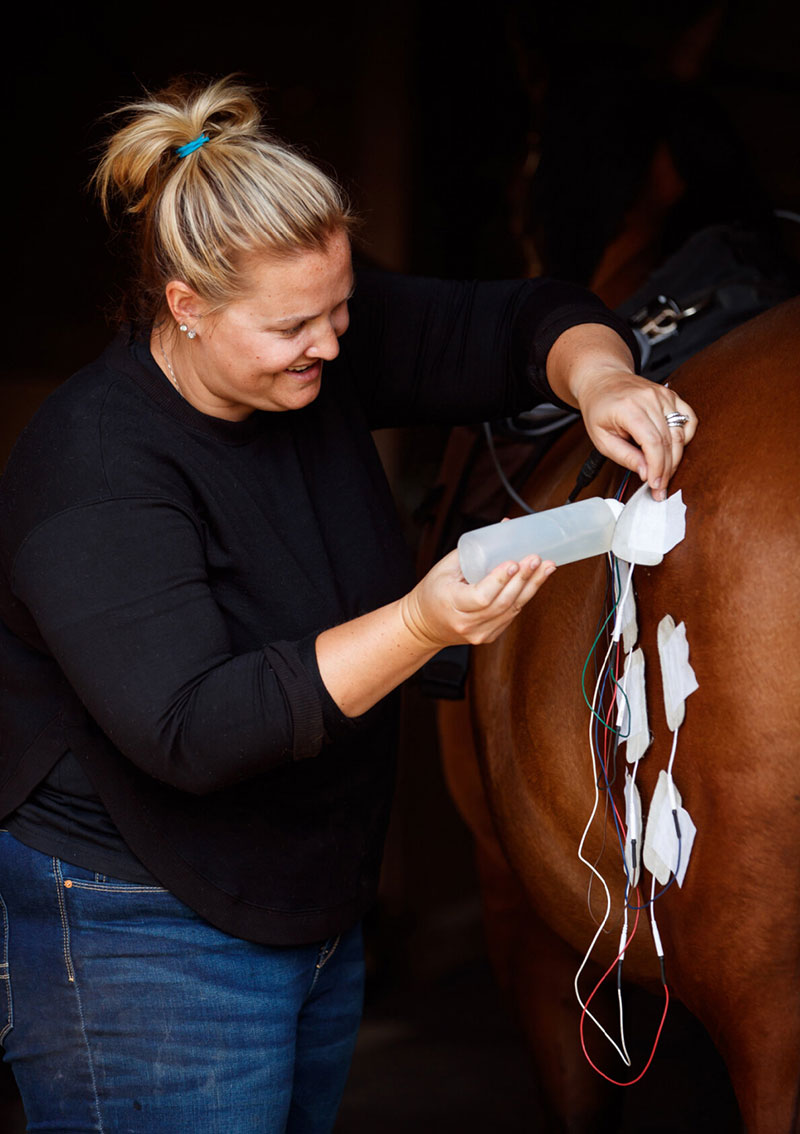
When you don’t see immediate progress with FES
You may experience little to no change or what seems to be backward progress initially. For example, if your horse has FES done on the neck, he may be heavier in your hand with his head carriage lower than average. This heaviness goes away as your horse adjusts to the improved flexibility from the traction in his neck.
He may also feel stiffer. Occasionally, one side of your horse’s body responds better to FES than the other. How your horse’s muscles respond can make him feel out of balance. Another session should improve muscle response and relieve any stiffness.
When no real change occurs, your horse may have more going on below the surface than anticipated. These problems can include such things as unlocking one muscle group only to find another in spasm, unbalanced or compensated muscles, deep muscular knots, or strained muscle.
That’s why I recommend starting an FES regimen with two sessions completed within 48 hours, then once a week. After that, we re-evaluate and determine a new plan.
Working your horse after FES
After the first visit, give your horse the day off. After the second visit, wait at least three hours before riding your horse. The work should be light if ridden and done in a frame at mainly the walk and trot.
If lunging, use side reins to keep your horse in a frame and have him only walk and trot unless otherwise advised. Any riding done not on FES days can be routine work. Any lunging should be done with side reins and a Theraband if necessary ex: Pessoa rig, long lining.
When you work your horse, you’ll want the following to happen:
- Movement through the back with an emphasis on using his core
- Maintenance of the bend in both directions
- Transference of power from the hind end through the neck
- When you do this, you’ll find it easier to collect your horse for longer because he can use his muscles in a more appropriate, functional way.
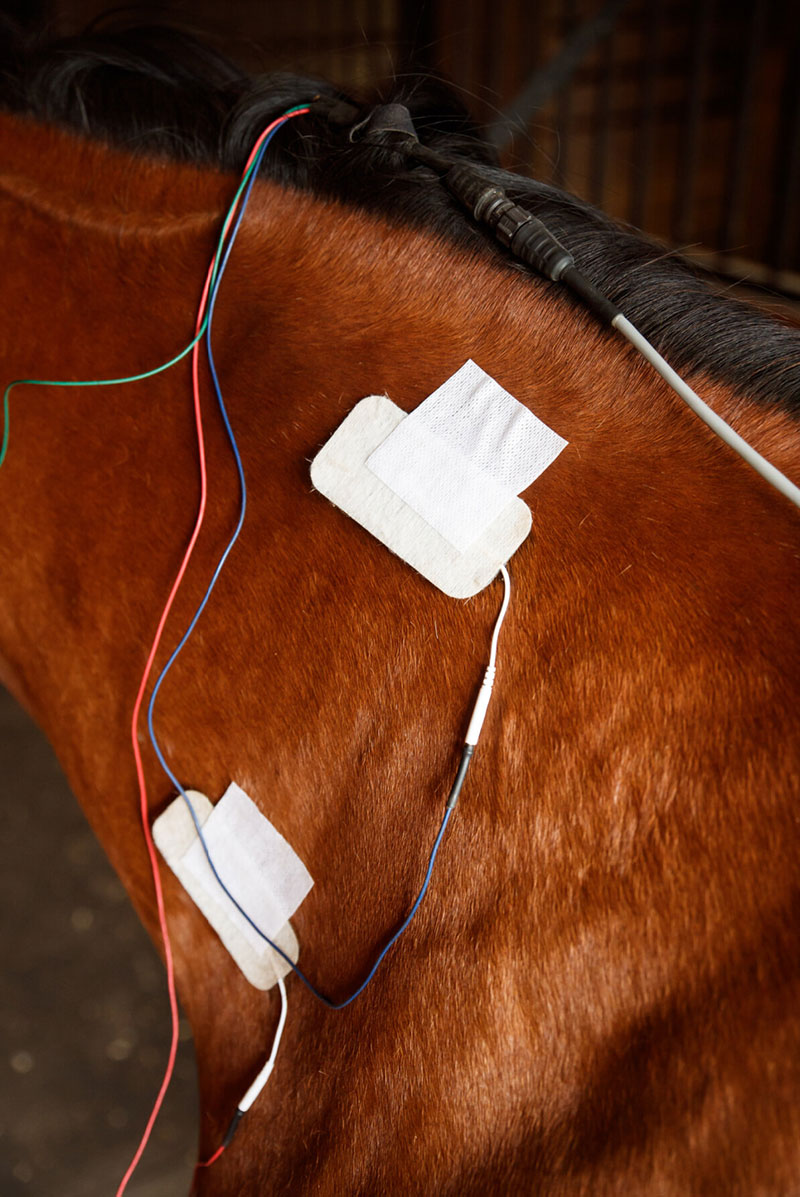
The difference between FES and TENS
While both therapies provide pain relief, FES is the only one that re-educates your horse’s muscles for functional movement.
What FES does…
- Stimulates sensory and motor nerves
- Replicates body’s own electrical impulse to generate a muscular response
- Is low voltage to obtain deep muscle movement (9-11 Volts)
- Uses a balanced biphasic waveform for stimulation
What TENs does…
- Stimulates sensory nerves
- Sends an impulse to confuse the sensory pathway, block pain
- Is high voltage to obtain deep muscle movement (120 Volts)
- Uses an unbalanced waveform for stimulation

How often your horse needs massage Therapy
Some horses need massage more frequently than others, depending on what is going on. 60% of a horse’s total body weight is the muscular system and responsible for motion. That’s why it’s not a bad idea to have your horse seen once a month.
Understand that equine bodywork is like peeling back an onion. If the horse has pain or restriction issues, it may take more than one session to relieve them fully.
How often it is needed is determined by whether or not his problem is a primary or secondary issue, workload, and training level. I recommend maintenance sessions for chronic conditions, higher-level athletes, and horses under stress (during stall rest).
Working your horse after a massage
I recommend giving the horse some recovery time. Start by letting your horse hang out in the stall to relax. You can then turn your horse out, walk, or lightly work him. Movement increases the circulation to eliminate lactic acid that the massage freed up during our session.
The next day, work your horse lighter, then put him back into regular work the following day.
There are instances when I recommend giving the horse more time off. This break depends on what I find during the massage.
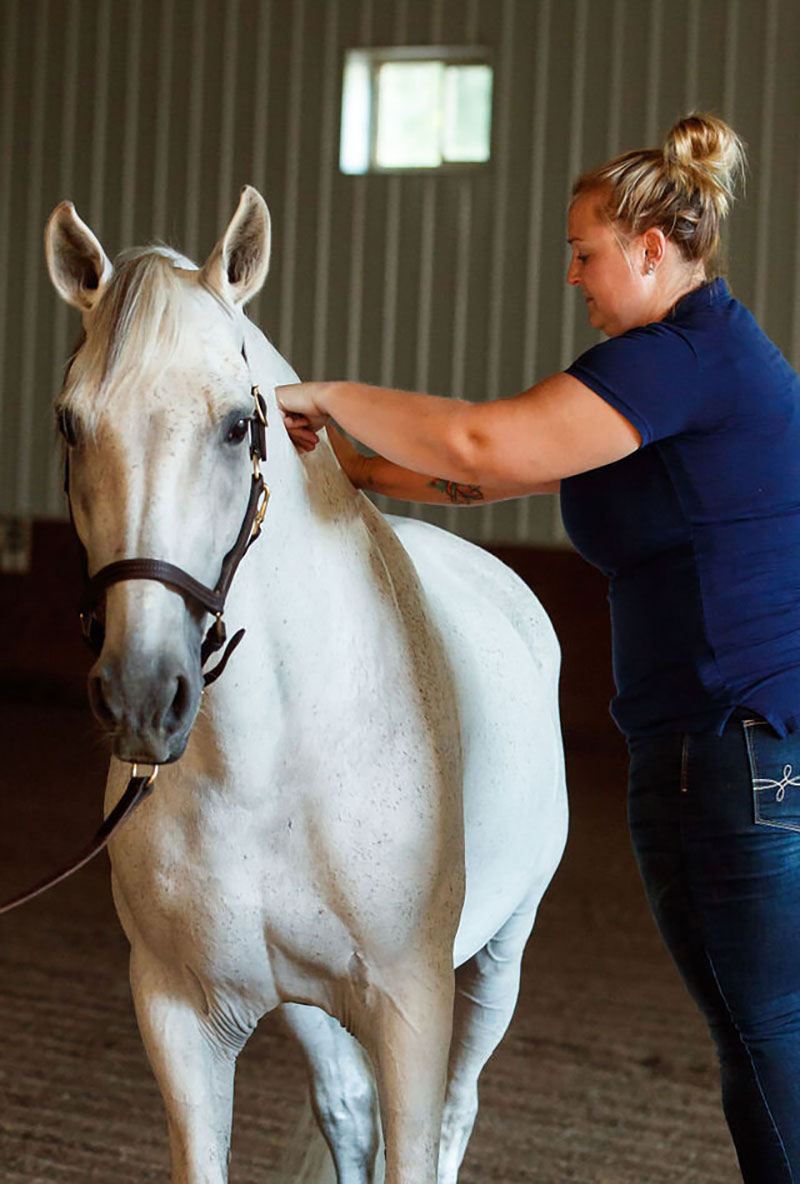
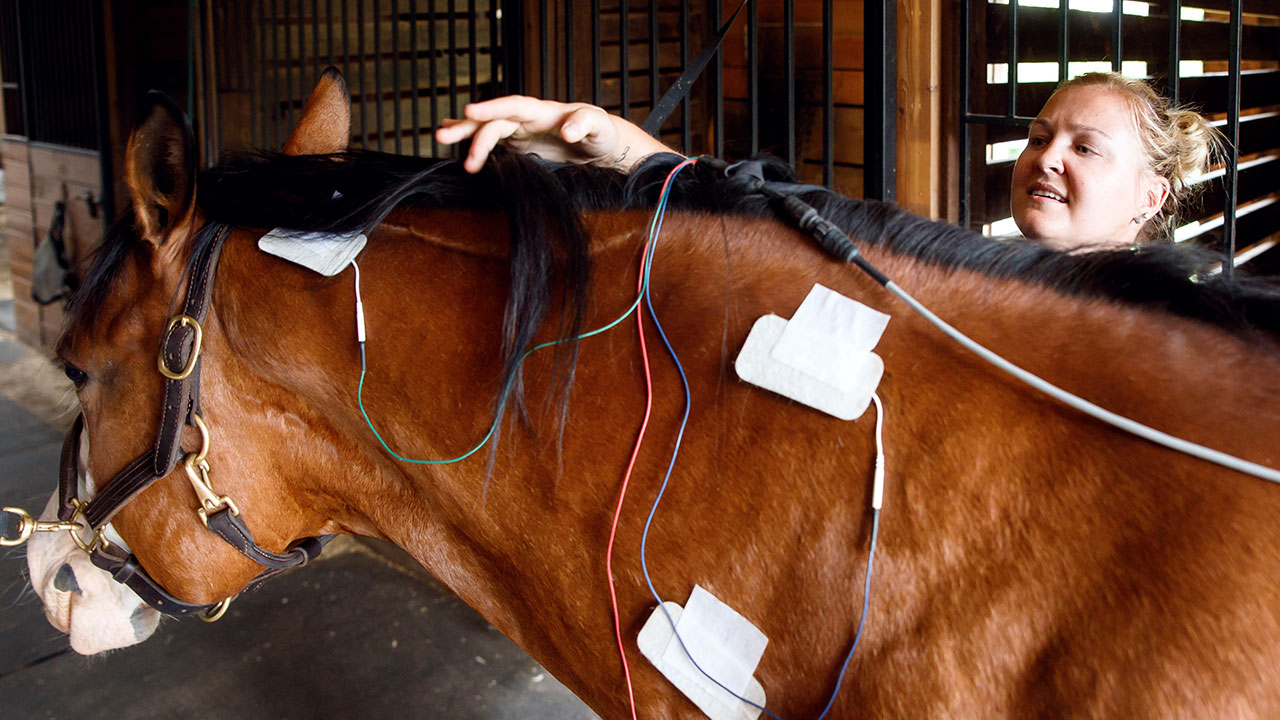
Are you ready to help your horse perform and feel better?
Let’s talk.
